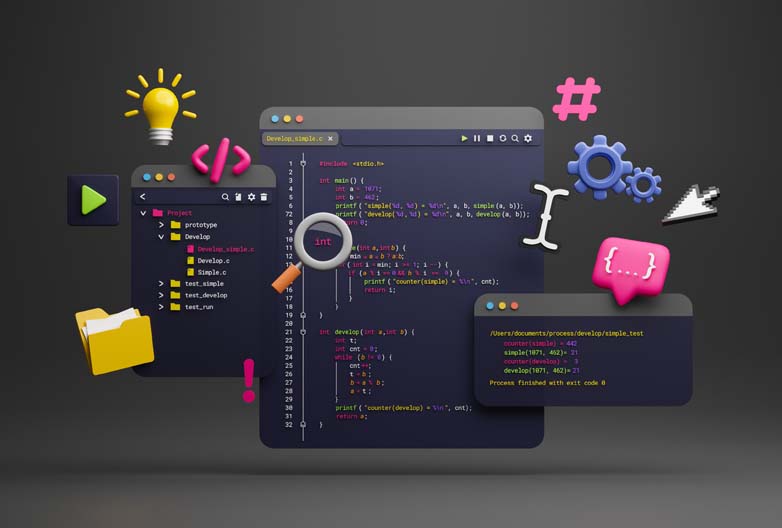Business OKRs - using Scrum to drive success
Today's competitive business landscape demands that organisations set ambitious goals and, importantly, employ effective methods to achieve them. Objectives and Key Results (OKRs), a goal-setting system, are often employed to align and track measurable outcomes. However, how these OKRs are pursued can significantly influence the final results. Agility Arabia advocates for the use of Scrum, a framework that provides a more responsive, adaptive, and collaborative environment than traditional waterfall techniques. But how exactly can Scrum help in better achieving your business OKRs?
Get in touch with us for a free consultation if you would like to explore any of the topics discussed below, or to find out how our enterprise Agile coaches could help your business to deliver faster, better and cheaper.
Aligning OKRs and Scrum
Scrum provides a highly adaptable and iterative approach to managing work, well suited to achieving OKRs such as increasing revenue, decreasing costs, improving employee satisfaction, and enhancing customer loyalty.
The Scrum framework is built around transparency, inspection, and adaptation, which resonate with OKR principles. Teams work in Sprints, with clear goals (Sprint Goals) that map to the overall, longer term Product Goal and the broader organisational objectives. This alignment allows teams to remain focused and flexible in their pursuit of OKRs.
Increasing Revenue
In traditional waterfall project management, the product is developed in linear, distinct stages, which can be inflexible and lead to late delivery or over-budget projects. In contrast, Scrum emphasises delivering a working product increment at the end of each Sprint. Early and continuous delivery enables quicker return on investment and revenue generation.
Your products and services are in the hands of customers much more quickly allowing you to start generating revenue much faster than waiting for the entire build to be completed. Plus, you’ll also be gathering user feedback earlier meaning you can respond to their requests and identify new features that can further drive revenue.
Reducing the Cost of Mistakes
Mistakes happen: we’re all human. Even AI makes its fair share of mistakes.
In a dynamic product development environment, it's not uncommon for initial assumptions to be off the mark or for mistakes to occur during build. Traditional project management models, with that linear approach we just talked about, often fail to identify these errors until later stages, leading to considerable costs and wasted resources.
Conversely, Scrum, with its iterative nature and emphasis on frequent inspection and adaptation, provides a safety net for these instances. Scrum Teams work in Sprints - timeboxed periods during which a usable increment of the product is created. At the end of each Sprint, during the Sprint Review and Retrospective, the team and stakeholders collaboratively inspect the product and the way the team is working. Not to forget the all-important voice-of-customer that we also mentioned above.
This repeated feedback loop enables the team to identify and rectify any mistakes, misalignments, or incorrect assumptions early in the process. The team can then adapt and pivot as necessary in the subsequent Sprint to improve the direction towards the Product Goal with improved ways of working, thereby saving costs and minimising waste. The regular inspection and adaptation integral to Scrum provide an agile and robust approach to managing and mitigating project risks.
Improving Employee Satisfaction
Scrum values individuals and interactions over processes and tools, which means teams are empowered, have ownership of their work, and are encouraged to self-organise. This promotes a more fulfilling and engaging work environment leading to improved employee satisfaction.
Enhancing Customer Loyalty and Engagement
Scrum's emphasis on customer collaboration is key to improving customer loyalty and engagement. The Product Owner maintains a Product Backlog, which reflects customer needs and is continuously refined based on customer feedback and changes in the market. Frequent delivery of product increments allows customers to see and use the value produced early and often, which enhances engagement and fosters loyalty.
Scrum's iterative and incremental nature makes it better suited to the dynamics of the business environment compared to a traditional Waterfall project management method. It allows for frequent inspection and adaptation based on changing requirements and market conditions. In short, your product can evolve as quickly as your market evolves meaning that you can deliver customer requirements faster, be able to test hypotheses around your product rapidly and adapt the next product iteration accordingly.
Conclusion: Drive Your OKRs with Scrum
Adopting Scrum to achieve business OKRs can yield significant benefits. It aligns teams towards a common goal, delivers value to the customer early and often, and fosters a fulfilling work environment that drives productivity and innovation. Scrum is an ideal companion for the implementation of OKRs, which are themselves meant to be ambitious, yet adaptable.
At Agility Arabia, we are committed to guiding organisations on their journey to business agility. Contact us today for a free initial consultation to learn how you can harness the power of Scrum to turn your ambitious OKRs into reality and outperform traditional methods.





